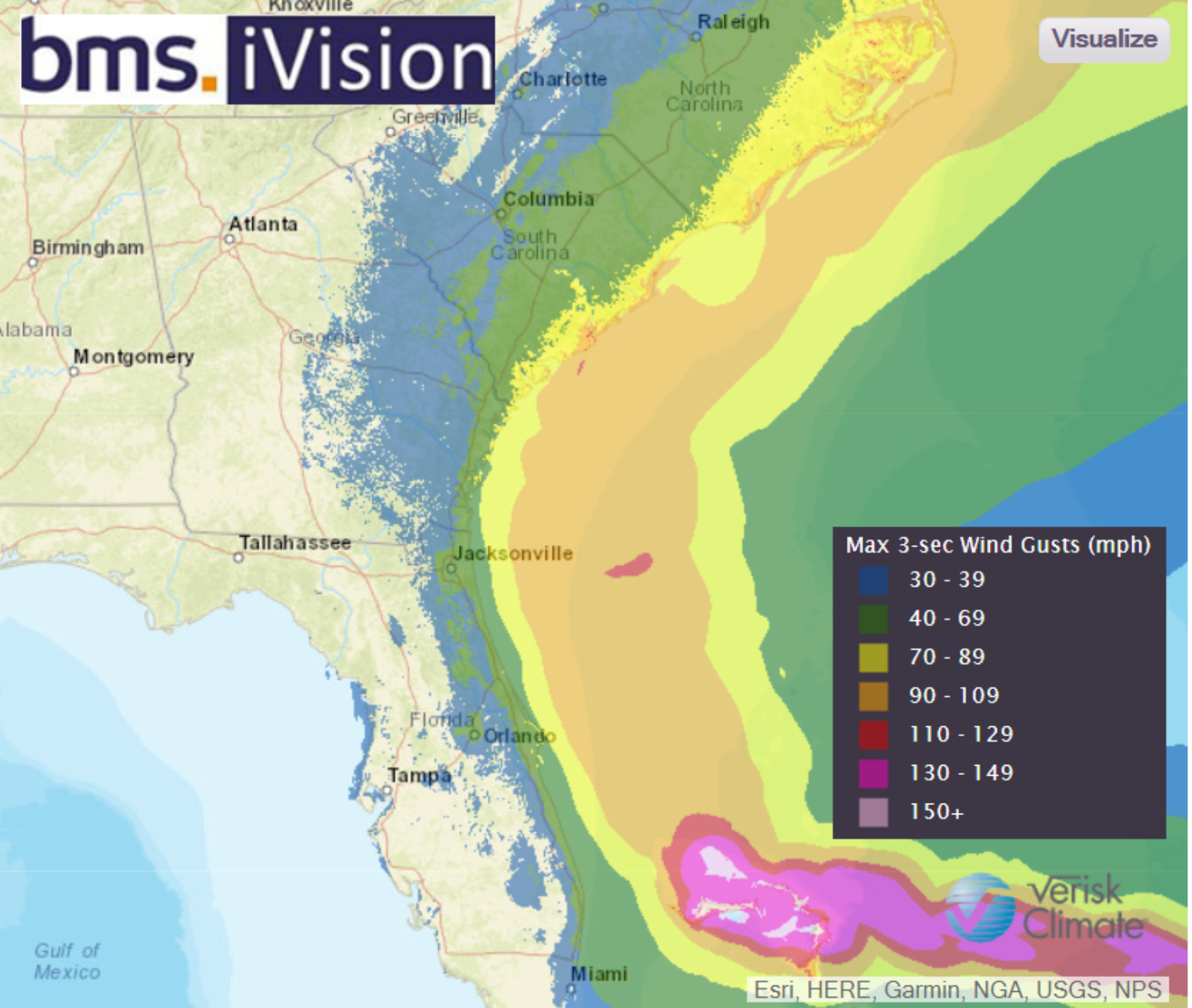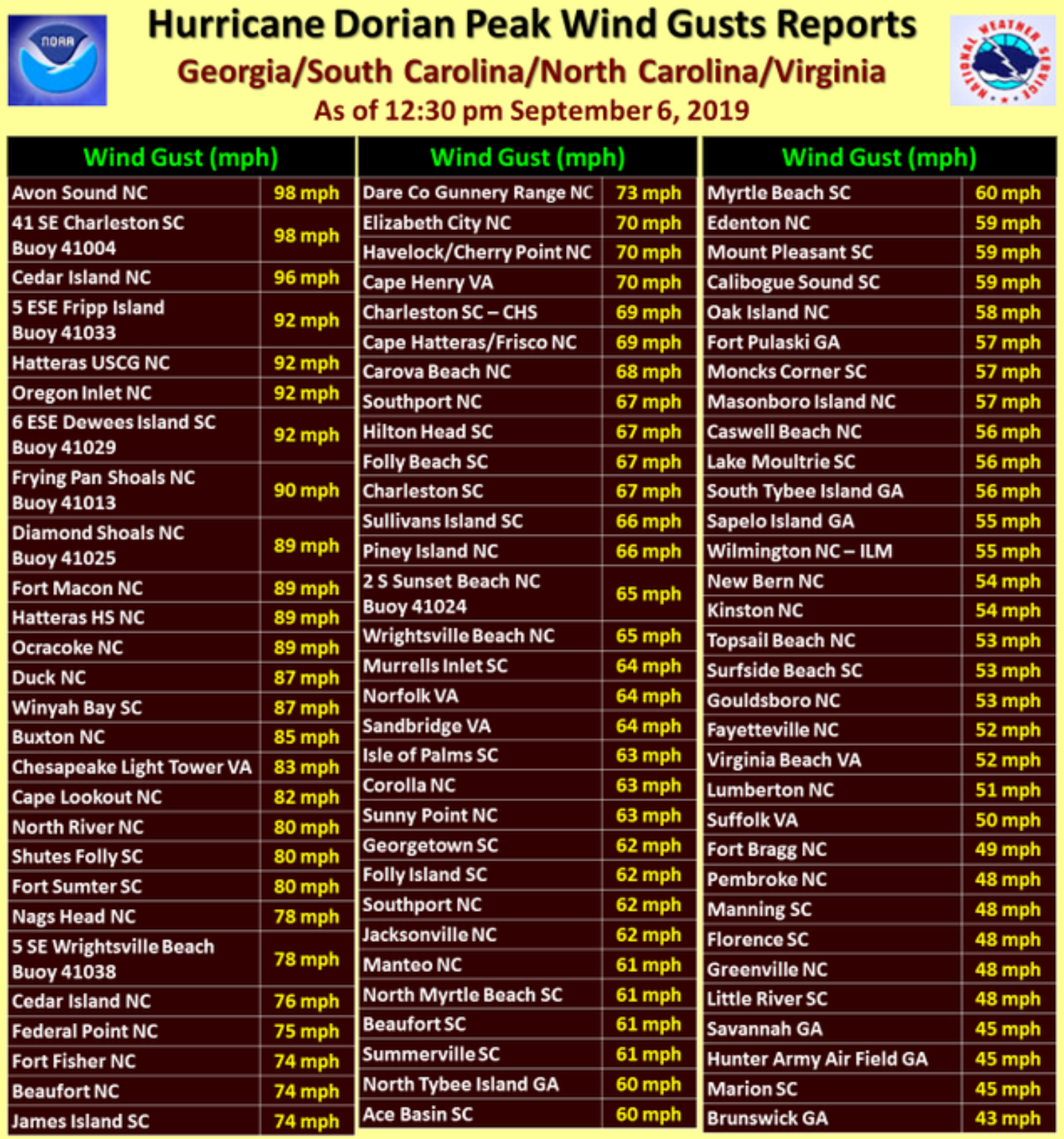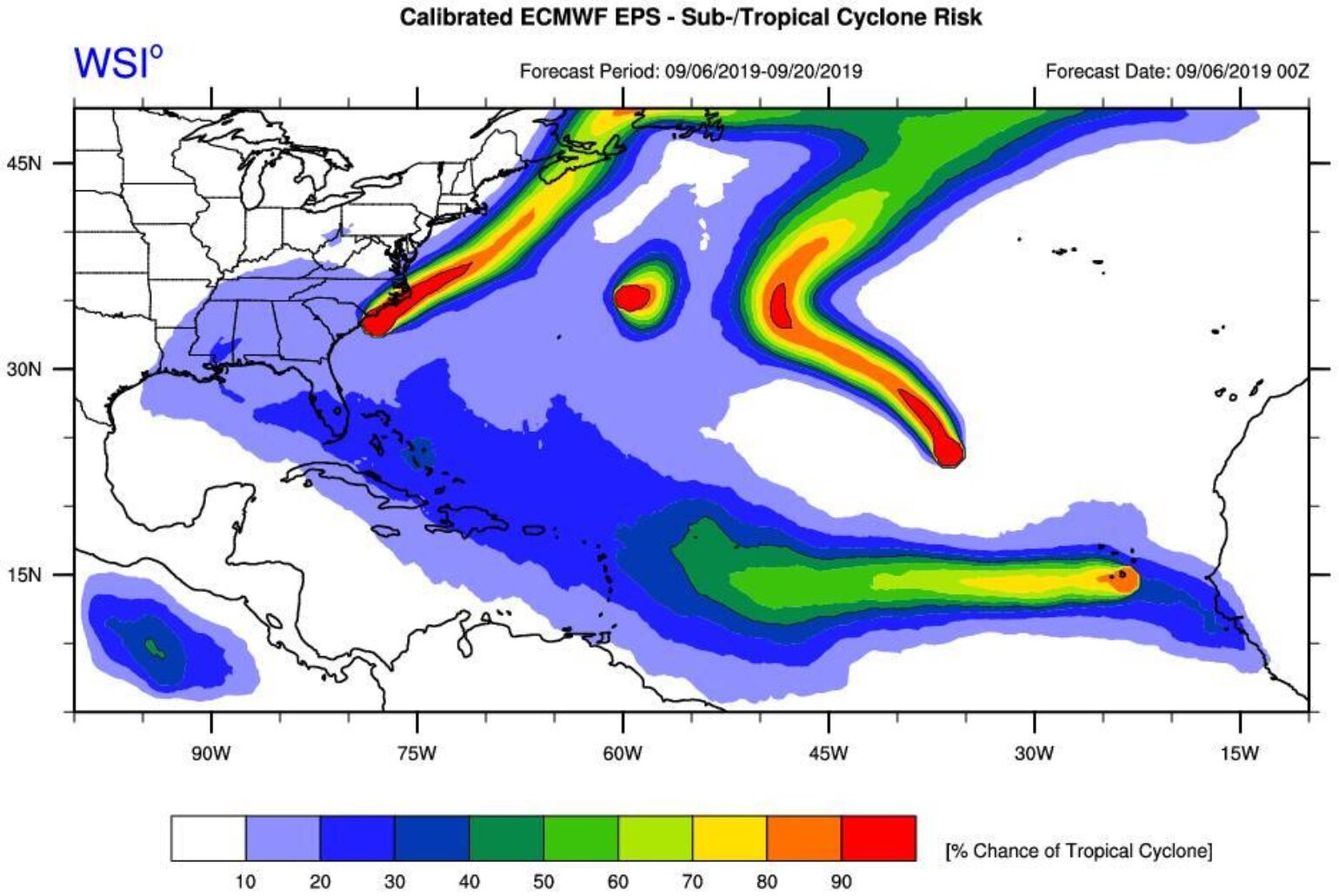To think, two weeks ago today the NHC first circled a tropical wave 1,400 miles east of the Windward Islands. This tropical wave would become Dorian and result in one of the strongest storms ever recorded globally. The impact on theCarolinas has largely been limited to coastal areas, and the impact on AtlanticCanada is currently unknown. But, it is nearly certain that the named stormDorian will never be used again given the historic catastrophic damage it caused to the northern Bahamas earlier this week.
There are so many things to think about and learn from Dorian, but, to me, the most amazing fact is that one of the strongest Category 5 storms to ever occur in the Atlantic Basin was just 110miles east of a population of 4.6 million people that were largely allowed to stay put. This speaks volumes to the confidence that exists in the short-term weather forecasting of named storms. Forecasting can always be improved, but, overall, once Dorian approached the Bahamas, the forecast was fairly accurate in terms of indicating that Dorian would track along the entire southeast coastline.
In the end, Dorian, with all of its possible forecasted landfall locations along the U.S. coastline, finally did make landfall on the last possible piece of land - Cape Hatteras at 8:35 am EDT this morning. I hope that the insurance industry does not soon forget about this storm because of its minimal landfall appearance. Dorian clearly showed atmospheric conditions indicating the potential for landfall as a 185 mph hurricane with a stall over the greater Miami area, likely creating an insurance industry-changing event. The industry may want to use Dorian as a stress test by shifting the track ever-so-slightly to the U.S. coastline and modeling scenarios of 60+ inch rainfalls across the state. Such scenarios would likely be eye-popping when considering what that amount of rain would do to the Lake Okeechobee flood control system, which is already in dire need of upgrades. These are extreme examples, but Dorian showed that they could happen. The question is will the industry, which is largely adopting private flood insurance across Florida, act on this or dismiss the potential devastation.
While Dorian is still impacting the outer banks of North Carolina this afternoon, conditions will quickly improve today as Dorian starts to race across the North Atlantic with high winds occurring across Martha’s Vineyard, Nantucket and Cape Code before Dorian impacts much of Nova Scotia as a fast-moving Category 1 hurricane. Thus, the insurance industry could still expect some insured loss to occur in Canada.
As Dorian paralleled the coastline yesterday, power outages increased as winds picked up speed - nearly 190,000 customers were without power in South Carolina last evening. While the number of power outages has since decreased in South Carolina, they are on the rise in North Carolina, with over 230,000 customers without power as of this morning.


Some of the worst damage from Dorian might have come from the 25 tornadoes that impacted the region over the last two days.
While wind and storm surge have been the big storylines with Dorian, some of the rainfall estimates have been impressive. Wilmington, NC picked up 8.58 inches of rain, which is more rain than that city experiences during the entire month of September on average.
What is Next?
Beyond Dorian, the next area of interest in the Atlantic is Invest 94L near the Cape Verde Islands. While conditions are marginal for development and there is not much model support, the few models that developed 94L indicate a tropical storm next week. We will see if this pans out, but I still think the MDR will be lackluster for storm development and much of the named storm activity will be in the North Atlantic and closer to North America, which has clearly been the case so far this season. Regardless, it looks like the insurance industry has a solid seven days to rest, with the next phase of excitement coming toward the end of this month into early October when large-scale upward motion moves back over the Atlantic Basin, thus helping with new tropical cyclone genesis.

